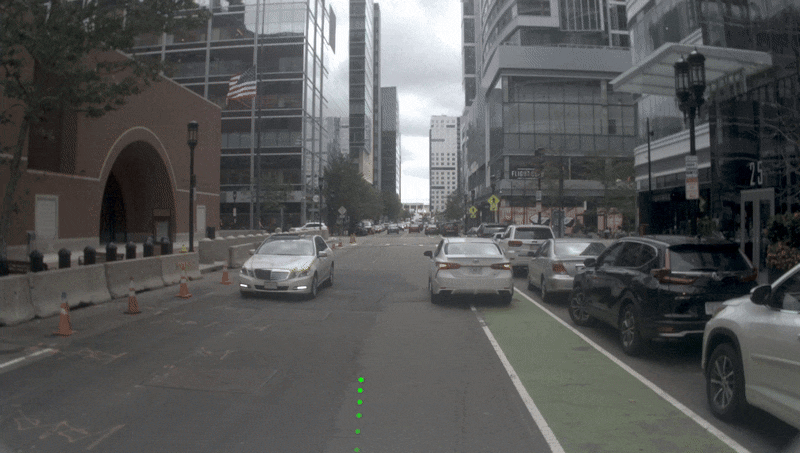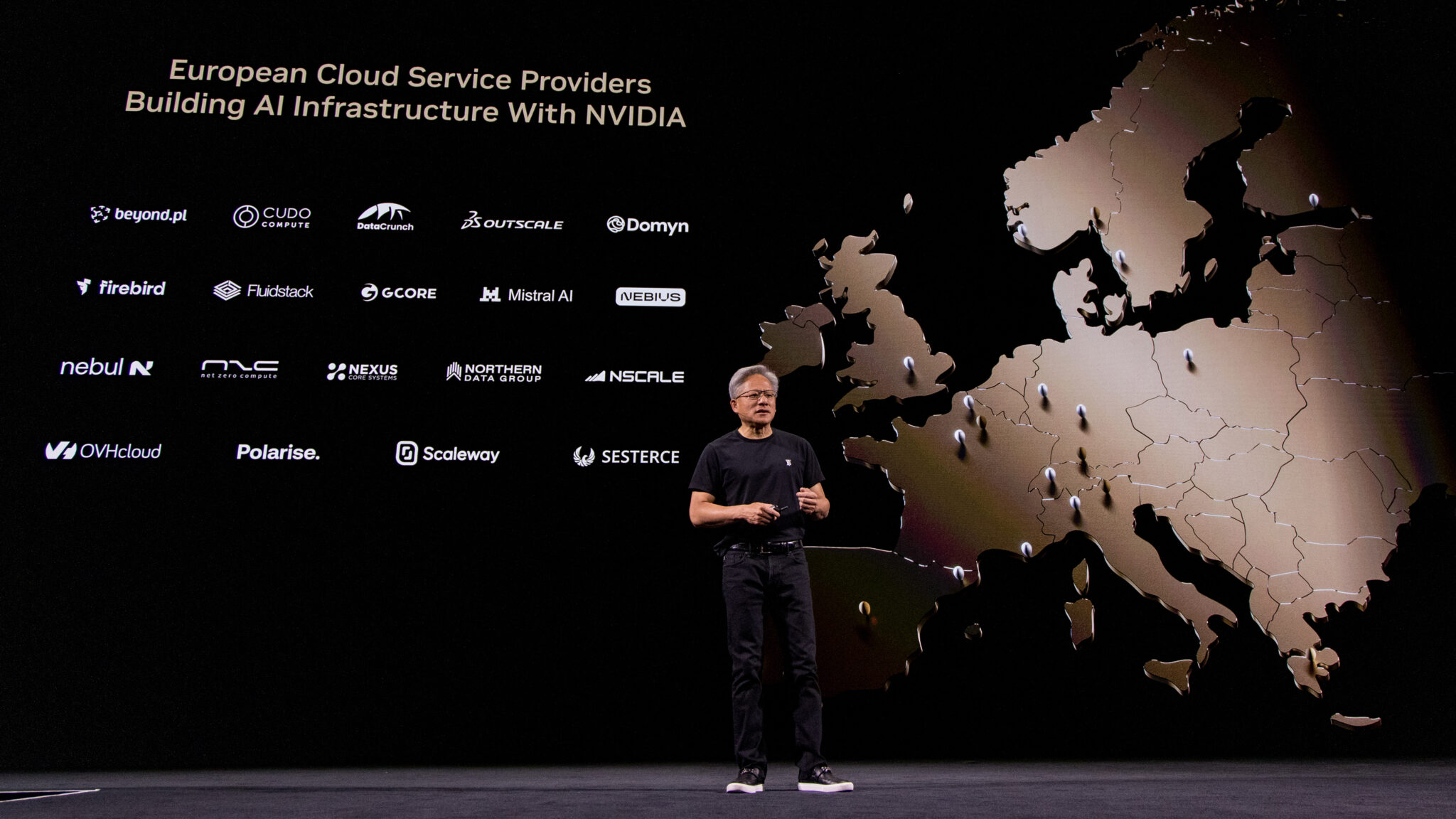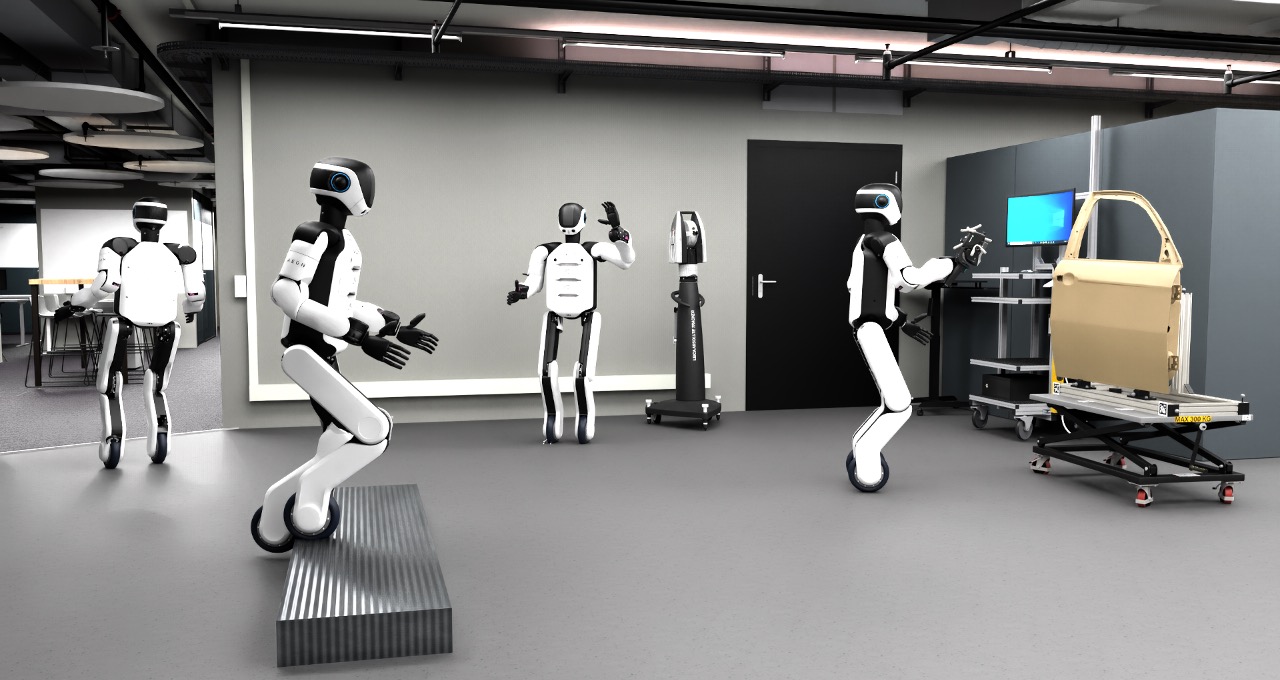NVIDIA CEO Drops the Blueprint for Europe’s AI Boom
At GTC Paris — held alongside VivaTech, Europe’s largest tech event — NVIDIA founder and CEO Jensen Huang delivered a clear message: Europe isn’t just adopting AI — it’s building it.
“We now have a new industry, an AI industry, and it’s now part of the new infrastructure, called intelligence infrastructure, that will be used by every country, every society,” Huang said, addressing an audience gathered online and at the iconic Dôme de Paris.
From exponential inference growth to quantum breakthroughs, and from infrastructure to industry, agentic AI to robotics, Huang outlined how the region is laying the groundwork for an AI-powered future.
A New Industrial Revolution
At the heart of this transformation, Huang explained, are systems like GB200 NVL72 — “one giant GPU” and NVIDIA’s most powerful AI platform yet — now in full production and powering everything from sovereign models to quantum computing.
“This machine was designed to be a thinking machine, a thinking machine, in the sense that it reasons, it plans, it spends a lot of time talking to itself,” Huang said, walking the audience through the size and scale of these machines and their performance.
At GTC Paris, Huang showed audience members the innards of some of NVIDIA’s latest hardware.
There’s more coming, with Huang saying NVIDIA’s partners are now producing 1,000 GB200 systems a week, “and this is just the beginning.” He walked the audience through a range of available systems ranging from the tiny NVIDIA DGX Spark to rack-mounted RTX PRO Servers.
Huang explained that NVIDIA is working to help countries use technologies like these to build both AI infrastructure — services built for third parties to use and innovate on — and AI factories, which companies build for their own use, to generate revenue.
NVIDIA is partnering with European governments, telcos and cloud providers to deploy NVIDIA technologies across the region. NVIDIA is also expanding its network of technology centers across Europe — including new hubs in Finland, Germany, Spain, Italy and the U.K. — to accelerate skills development and quantum growth.
Quantum Meets Classical
Europe’s quantum ambitions just got a boost.
The NVIDIA CUDA-Q platform is live on Denmark’s Gefion supercomputer, opening new possibilities for hybrid AI and quantum engineering. In addition, Huang announced that CUDA-Q is now available on NVIDIA Grace Blackwell systems.
Across the continent, NVIDIA is partnering with supercomputing centers and quantum hardware builders to advance hybrid quantum-AI research and accelerate quantum error correction.
“Quantum computing is reaching an inflection point,” Huang said. “We are within reach of being able to apply quantum computing, quantum classical computing, in areas that can solve some interesting problems in the coming years.”
Sovereign Models, Smarter Agents
European developers want more control over their models. Enter NVIDIA Nemotron, designed to help build large language models tuned to local needs.
“And so now you know that you have access to an enhanced open model that is still open, that is top of the leader chart,” Huang said.
These models will be coming to Perplexity, a reasoning search engine, enabling secure, multilingual AI deployment across Europe.
“You can now ask and get questions answered in the language, in the culture, in the sensibility of your country,” Huang said.
Huang explained how NVIDIA is helping countries across Europe build AI infrastructure.
Every company will build its own agents, Huang said. To help create those agents, Huang introduced a suite of agentic AI blueprints, including an Agentic AI Safety blueprint for enterprises and governments.
The new NVIDIA NeMo Agent toolkit and NVIDIA AI Blueprint for building data flywheels further accelerate the development of safe, high-performing AI agents.
To help deploy these agents, NVIDIA is partnering with European governments, telcos and cloud providers to deploy the DGX Cloud Lepton platform across the region, providing instant access to accelerated computing capacity.
“One model architecture, one deployment, and you can run it anywhere,” Huang said, adding that Lepton is now integrated with Hugging Face, giving developers direct access to global compute.
The Industrial Cloud Goes Live
AI isn’t just virtual. It’s powering physical systems, too, sparking a new industrial revolution.
“We’re working on industrial AI with one company after another,” Huang said, describing work to build digital twins based on the NVIDIA Omniverse platform with companies across the continent.
Huang explained that everything he showed during his keynote was “computer simulation, not animation” and that it looks beautiful because “it turns out the world is beautiful, and it turns out math is beautiful.”
To further this work, Huang announced NVIDIA is launching the world’s first industrial AI cloud — to be built in Germany — to help Europe’s manufacturers simulate, automate and optimize at scale.
“Soon, everything that moves will be robotic,” Huang said. “And the car is the next one.”
NVIDIA DRIVE, NVIDIA’s full-stack AV platform, is now in production to accelerate the large-scale deployment of safe, intelligent transportation.
And to show what’s coming next, Huang was joined on stage by Grek, a pint-sized robot, as Huang talked about how NVIDIA partnered with DeepMind and Disney to build Newton, the world’s most advanced physics training engine for robotics.
The Next Wave
The next wave of AI has begun — and it’s exponential, Huang explained.
“We have physical robots, and we have information robots. We call them agents,” Huang said. “The technology necessary to teach a robot to manipulate, to simulate — and of course, the manifestation of an incredible robot — is now right in front of us.”
This new era of AI is being driven by a surge in inference workloads. “The number of people using inference has gone from 8 million to 800 million — 100x in just a couple of years,” Huang said.
To meet this demand, Huang emphasized the need for a new kind of computer: “We need a special computer designed for thinking, designed for reasoning. And that’s what Blackwell is — a thinking machine.”
Huang and Grek, as he explained how AI is driving advancements in robotics.
These Blackwell-powered systems will live in a new class of data centers — AI factories — built to generate tokens, the raw material of modern intelligence.
“These AI factories are going to generate tokens,” Huang said, turning to Grek with a smile. “And these tokens are going to become your food, little Grek.”
With that, the keynote closed on a bold vision: a future powered by sovereign infrastructure, agentic AI, robotics — and exponential inference — all built in partnership with Europe.
Watch the NVIDIA GTC Paris keynote from Huang at VivaTech and explore GTC Paris sessions.
#nvidia #ceo #drops #blueprint #europesNVIDIA CEO Drops the Blueprint for Europe’s AI Boom
At GTC Paris — held alongside VivaTech, Europe’s largest tech event — NVIDIA founder and CEO Jensen Huang delivered a clear message: Europe isn’t just adopting AI — it’s building it.
“We now have a new industry, an AI industry, and it’s now part of the new infrastructure, called intelligence infrastructure, that will be used by every country, every society,” Huang said, addressing an audience gathered online and at the iconic Dôme de Paris.
From exponential inference growth to quantum breakthroughs, and from infrastructure to industry, agentic AI to robotics, Huang outlined how the region is laying the groundwork for an AI-powered future.
A New Industrial Revolution
At the heart of this transformation, Huang explained, are systems like GB200 NVL72 — “one giant GPU” and NVIDIA’s most powerful AI platform yet — now in full production and powering everything from sovereign models to quantum computing.
“This machine was designed to be a thinking machine, a thinking machine, in the sense that it reasons, it plans, it spends a lot of time talking to itself,” Huang said, walking the audience through the size and scale of these machines and their performance.
At GTC Paris, Huang showed audience members the innards of some of NVIDIA’s latest hardware.
There’s more coming, with Huang saying NVIDIA’s partners are now producing 1,000 GB200 systems a week, “and this is just the beginning.” He walked the audience through a range of available systems ranging from the tiny NVIDIA DGX Spark to rack-mounted RTX PRO Servers.
Huang explained that NVIDIA is working to help countries use technologies like these to build both AI infrastructure — services built for third parties to use and innovate on — and AI factories, which companies build for their own use, to generate revenue.
NVIDIA is partnering with European governments, telcos and cloud providers to deploy NVIDIA technologies across the region. NVIDIA is also expanding its network of technology centers across Europe — including new hubs in Finland, Germany, Spain, Italy and the U.K. — to accelerate skills development and quantum growth.
Quantum Meets Classical
Europe’s quantum ambitions just got a boost.
The NVIDIA CUDA-Q platform is live on Denmark’s Gefion supercomputer, opening new possibilities for hybrid AI and quantum engineering. In addition, Huang announced that CUDA-Q is now available on NVIDIA Grace Blackwell systems.
Across the continent, NVIDIA is partnering with supercomputing centers and quantum hardware builders to advance hybrid quantum-AI research and accelerate quantum error correction.
“Quantum computing is reaching an inflection point,” Huang said. “We are within reach of being able to apply quantum computing, quantum classical computing, in areas that can solve some interesting problems in the coming years.”
Sovereign Models, Smarter Agents
European developers want more control over their models. Enter NVIDIA Nemotron, designed to help build large language models tuned to local needs.
“And so now you know that you have access to an enhanced open model that is still open, that is top of the leader chart,” Huang said.
These models will be coming to Perplexity, a reasoning search engine, enabling secure, multilingual AI deployment across Europe.
“You can now ask and get questions answered in the language, in the culture, in the sensibility of your country,” Huang said.
Huang explained how NVIDIA is helping countries across Europe build AI infrastructure.
Every company will build its own agents, Huang said. To help create those agents, Huang introduced a suite of agentic AI blueprints, including an Agentic AI Safety blueprint for enterprises and governments.
The new NVIDIA NeMo Agent toolkit and NVIDIA AI Blueprint for building data flywheels further accelerate the development of safe, high-performing AI agents.
To help deploy these agents, NVIDIA is partnering with European governments, telcos and cloud providers to deploy the DGX Cloud Lepton platform across the region, providing instant access to accelerated computing capacity.
“One model architecture, one deployment, and you can run it anywhere,” Huang said, adding that Lepton is now integrated with Hugging Face, giving developers direct access to global compute.
The Industrial Cloud Goes Live
AI isn’t just virtual. It’s powering physical systems, too, sparking a new industrial revolution.
“We’re working on industrial AI with one company after another,” Huang said, describing work to build digital twins based on the NVIDIA Omniverse platform with companies across the continent.
Huang explained that everything he showed during his keynote was “computer simulation, not animation” and that it looks beautiful because “it turns out the world is beautiful, and it turns out math is beautiful.”
To further this work, Huang announced NVIDIA is launching the world’s first industrial AI cloud — to be built in Germany — to help Europe’s manufacturers simulate, automate and optimize at scale.
“Soon, everything that moves will be robotic,” Huang said. “And the car is the next one.”
NVIDIA DRIVE, NVIDIA’s full-stack AV platform, is now in production to accelerate the large-scale deployment of safe, intelligent transportation.
And to show what’s coming next, Huang was joined on stage by Grek, a pint-sized robot, as Huang talked about how NVIDIA partnered with DeepMind and Disney to build Newton, the world’s most advanced physics training engine for robotics.
The Next Wave
The next wave of AI has begun — and it’s exponential, Huang explained.
“We have physical robots, and we have information robots. We call them agents,” Huang said. “The technology necessary to teach a robot to manipulate, to simulate — and of course, the manifestation of an incredible robot — is now right in front of us.”
This new era of AI is being driven by a surge in inference workloads. “The number of people using inference has gone from 8 million to 800 million — 100x in just a couple of years,” Huang said.
To meet this demand, Huang emphasized the need for a new kind of computer: “We need a special computer designed for thinking, designed for reasoning. And that’s what Blackwell is — a thinking machine.”
Huang and Grek, as he explained how AI is driving advancements in robotics.
These Blackwell-powered systems will live in a new class of data centers — AI factories — built to generate tokens, the raw material of modern intelligence.
“These AI factories are going to generate tokens,” Huang said, turning to Grek with a smile. “And these tokens are going to become your food, little Grek.”
With that, the keynote closed on a bold vision: a future powered by sovereign infrastructure, agentic AI, robotics — and exponential inference — all built in partnership with Europe.
Watch the NVIDIA GTC Paris keynote from Huang at VivaTech and explore GTC Paris sessions.
#nvidia #ceo #drops #blueprint #europes

















.jpg)